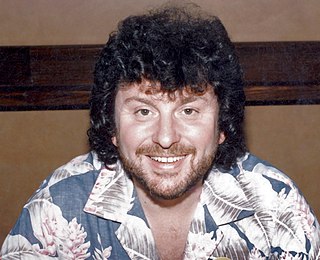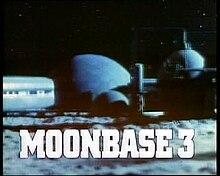The Seeds of Death is the fifth serial of the sixth season of the British science fiction television series Doctor Who. Written by Brian Hayles and an uncredited Terrance Dicks and directed by Michael Ferguson, it originally aired in six weekly parts on BBC1 from 25 January to 1 March 1969. It sees the return of the Ice Warriors, previously introduced by Hayles in the 1967 serial The Ice Warriors.

The Aztecs is the sixth serial in the British science fiction television series Doctor Who, which was first broadcast on BBC1 in four weekly parts from 23 May to 13 June 1964. It was written by John Lucarotti and directed by John Crockett. In the serial, the First Doctor, his granddaughter Susan, and teachers Ian Chesterton and Barbara Wright arrive in Mexico during the Aztec empire. Barbara becomes mistaken for the goddess Yetaxa, and accepts the identity in hope of persuading the Aztecs to give up human sacrifice, despite the Doctor's warnings about changing history.
The Dæmons is the fifth and final serial of the eighth season of the British science fiction television series Doctor Who, which was first broadcast in five weekly parts on BBC1 from 22 May to 19 June 1971.

Terrance William Dicks was an English author and television screenwriter, script editor and producer. In television, he had a long association with the BBC science-fiction series Doctor Who, working as a writer and also serving as the programme's script editor from 1968 to 1974. The Doctor Who News Page described him as "arguably the most prolific contributor to Doctor Who". He later became a script editor and producer of classic serials for the BBC.

Clement Graham Crowden was a Scottish actor. He was best known for his many appearances in television comedy dramas and films, often playing eccentric scientist, teacher and doctor characters.

John Turner, known professionally as John Nathan-Turner, was an English television producer. He was the ninth producer of the long-running BBC science fiction series Doctor Who and the final producer of the series' first run on television. He finished the role having become the longest-serving Doctor Who producer and cast Peter Davison, Colin Baker and Sylvester McCoy as the Fifth, Sixth and Seventh Doctors, respectively.
Robot is the first serial of the 12th season in the British science fiction television series Doctor Who, which was first broadcast in four weekly parts on BBC1 from 28 December 1974 to 18 January 1975. It was the first full serial to feature Tom Baker as the Fourth Doctor, as well as Ian Marter as new companion Harry Sullivan. In the serial, the director of an English research institute plots to use an experimental robot to steal nuclear launch codes and blackmail the world's governments with them.
Philip Michael Hinchcliffe is an English television producer, screenwriter and script editor. After graduating from Cambridge University, he began his career as a writer and script editor at Associated Television before joining the BBC to produce Doctor Who in one of its most popular eras from 1974 to 1977. In 2010, Hinchcliffe was chosen by Den of Geek as the best ever producer of the series.
The Green Death is the fifth and final serial of the tenth season of the British science fiction television series Doctor Who, which was first broadcast in six weekly parts on BBC1 from 19 May to 23 June 1973. It was the last regular appearance of Katy Manning as companion Jo Grant.
The Moonbase is the half-missing sixth serial of the fourth season in the British science fiction television series Doctor Who, which was first broadcast on BBC1 in four weekly parts from 11 February to 4 March 1967.

Barry Leopold Letts was an English actor, television director, writer and producer, best known for being the producer of Doctor Who from 1969 to 1974.

John Vincent Lucarotti was a British-Canadian screenwriter and author who worked on The Avengers, The Troubleshooters and Doctor Who in the 1960s.
Morris Randolph Barry was a producer and director for the BBC in the 1960s and 1970s, and also worked as an actor.
Christopher Chisholm Barry was a British television director. He worked extensively in BBC television drama and became best known for his work on the science fiction series Doctor Who. He also directed the direct to video Doctor Who spin-off Downtime in 1995.

The Paradise of Death is a 5-part BBC radio drama, based on the long-running British science fiction television series Doctor Who, and starring Jon Pertwee as the Doctor.
George Gallaccio is a British television producer who previously worked as a production assistant and production unit manager. His most prominent work was as the producer on two BBC detective drama series, Miss Marple (1985–1992), based on the novels by Agatha Christie, and Bergerac (1988–1991), for which he was the final producer.
John Brason is a British scriptwriter and script editor, best known for the series made in collaboration with television producer Gerard Glaister, Colditz and Secret Army both set during World War II.

The twelfth season of British science fiction television series Doctor Who began on 28 December 1974 with Tom Baker's first serial Robot, and ended with Revenge of the Cybermen on 10 May 1975.

The eleventh season of British science fiction television series Doctor Who began on 15 December 1973 with the serial The Time Warrior, and ended with Jon Pertwee's final serial Planet of the Spiders. The season's writing was recognized by the Writer's Guild of Great Britain for Best Children's Drama Script. This is the Third Doctor's fifth and final series, and also the last consecutively to be produced by Barry Letts and script edited by Terrance Dicks. Both Letts and Dicks would work for the programme again, however - Letts in Season 18 and Dicks on future stories, e.g. Horror of Fang Rock.

The first season of British science fiction television programme Doctor Who was originally broadcast on BBC TV between 1963 and 1964. The series began on 23 November 1963 with An Unearthly Child and ended with The Reign of Terror on 12 September 1964. The show was created by BBC Television head of drama Sydney Newman to fill the Saturday evening timeslot and appeal to both the younger and older audiences of the neighbouring programmes. Formatting of the programme was handled by Newman, head of serials Donald Wilson, writer C. E. Webber, and producer Rex Tucker. Production was overseen by the BBC's first female producer Verity Lambert and story editor David Whitaker, both of whom handled the scripts and stories.











